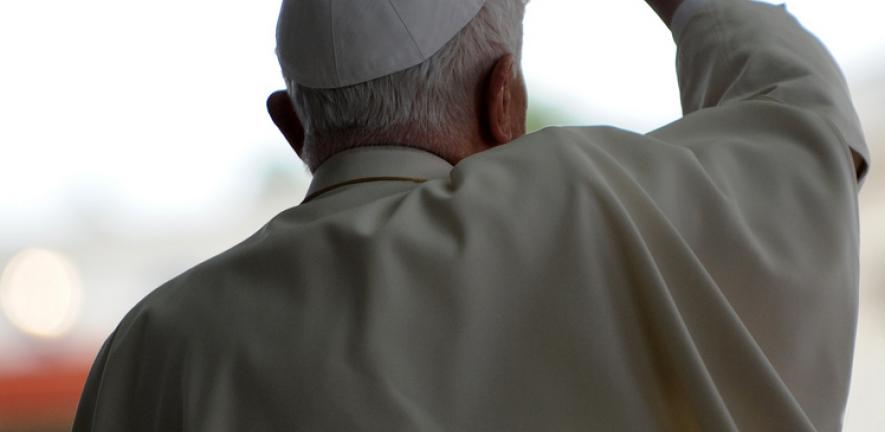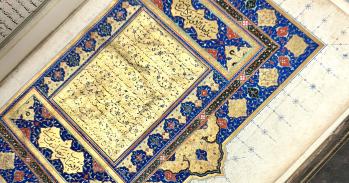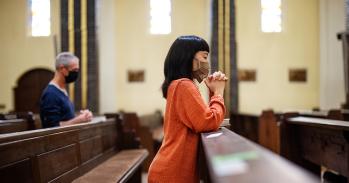
Dr Sara Silvestri, a specialist in religion and politics and a Research Associate with the Von Hügel Institute, St Edmund’s College, examines the implications of the resignation of Benedict XVI for the institutional role of the pope and the future of the Catholic Church.
Dr Sara Silvestri, a specialist in religion and politics and a Research Associate with the Von Hügel Institute, St Edmund’s College, examines the implications of the resignation of Benedict XVI for the institutional role of the pope and the future of the Catholic Church.
It could be said that, for Benedict, the divine gift of human freedom has been in a way celebrated by his very decision to abdicate after a long reflection
Sara Silvestri
On a first level of analysis, Benedict’s shocking announcement would seem to contradict the image of the papacy as left by his predecessor. John Paul II kept heading the global Catholic Church despite old age and the major illnesses that characterised the last few years of his pontificate. This begs the question as to whether the two popes held different views of the institution they represented.
Intrinsically, the two are not as divergent as they might appear. Each gesture, in its own ways, sent an important message about the recognition of the frailty and limits of the human condition while simultaneously recognising the huge responsibility and immense tasks that come with taking on the role of head of the Catholic Church.
Both popes have answered in a responsible and humble manner to their own experience of old age – showing deep appreciation for the role of leadership they were tasked with. They have both acted by doing what they thought was best for the universal church rather than for themselves.
John Paul clearly wanted to highlight the respect for old age and even when he could no longer speak allowed his own infirm body to criticise euthanasia. Benedict has demonstrated his respect for the Petrine ministry (the mission of the successor of Saint Peter, who was entrusted by Jesus with leading the Christian community) by deciding to withdraw because he recognised that his body was no longer up to fulfilling as necessary – for the good of the Church – the important tasks and difficulties that lie ahead.
For many, both popes have reinforced the symbolic meaning of the papacy, to reiterate that in the Catholic doctrine, this role of authority is not based on human assurances but on Christ.
It could be said that, for Benedict, the divine gift of human freedom has been in a way celebrated by his very decision to abdicate after a long reflection.
A similar message both highlighting the limits of human nature but also the gift of free will came only a few months ago from another key figure of the Catholic Church, who was also widely appreciated beyond Catholic and Christian circles – Cardinal Carlo Maria Martini. This progressive Cardinal was known for his critical views of the bureaucracy of the Church, and for being miles away from Benedict in orientation.
Yet the two figures seem to reconnect in the radical gestures they both made at the end of their lives (the physical life of Martini and the institutional life of Benedict). At the last stages of his life, gravely affected by Parkinson’s disease, the Italian Cardinal asked the doctors to turn off the machine that was keeping him alive as he wanted to meet God through a natural death.
This decision raised lots of controversy and criticism within the church, as it was understood as almost an endorsement of euthanasia. For me, this is not what Martini intended. Rather, in the opposite way to John Paul II, and in a similar way to the decision Benedict has just taken, he also insisted on accepting the limited quality of human life compared to the eternal love, justice and perfection of God.
Benedict and Martini have both made an independent and free radical decision that could be interpreted as the celebration of the gift of free will. The two decisions could be read as practical indications that it is possible to witness one’s Christian faith and to serve the Church by stepping beyond its conventions and structures and by stepping down from power.
One figure has been identified with traditionalism and conservatism, the other with progressive thinking. Yet, through their radical actions, the two prelates might have come to the same conclusion about the need to shake the structures of the Church, and may have contributed to the first steps towards reforming and renewing the Catholic Church.
More information on Dr Silvestri’s research can be found on the Von Hugel Institute website here.
This work is licensed under a Creative Commons Licence. If you use this content on your site please link back to this page.





